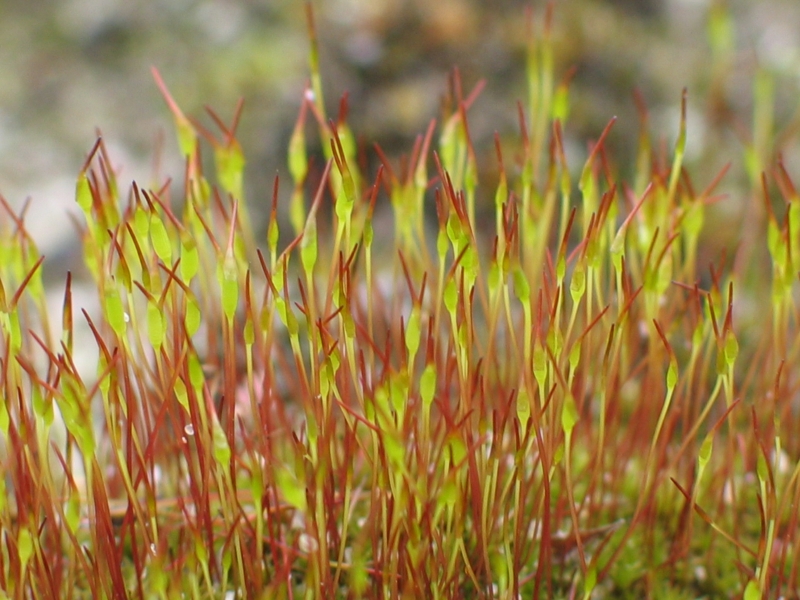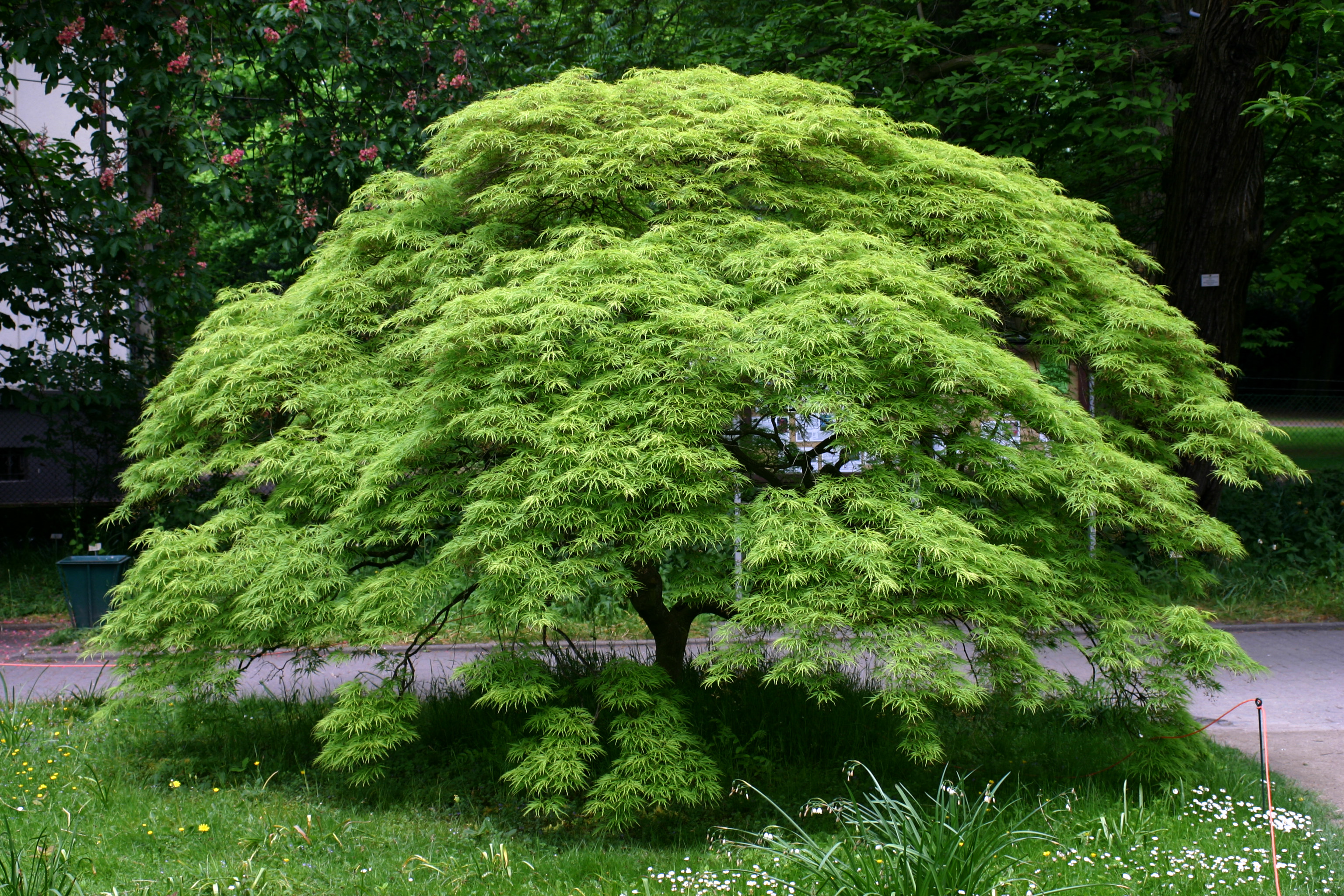Sporophyte on:
[Wikipedia]
[Google]
[Amazon]
A sporophyte () is one of the two alternating multicellular phases in the life cycles of

 Bryophytes (
Bryophytes ( Most algae have dominant gametophyte generations, but in some species the gametophytes and sporophytes are morphologically similar ( isomorphic). An independent sporophyte is the dominant form in all clubmosses, horsetails, ferns, gymnosperms, and angiosperms that have survived to the present day. Early land plants had sporophytes that produced identical spores ( isosporous or homosporous) but the ancestors of the gymnosperms evolved complex heterosporous life cycles in which the spores producing male and female gametophytes were of different sizes, the female megaspores tending to be larger, and fewer in number, than the male microspores.
Most algae have dominant gametophyte generations, but in some species the gametophytes and sporophytes are morphologically similar ( isomorphic). An independent sporophyte is the dominant form in all clubmosses, horsetails, ferns, gymnosperms, and angiosperms that have survived to the present day. Early land plants had sporophytes that produced identical spores ( isosporous or homosporous) but the ancestors of the gymnosperms evolved complex heterosporous life cycles in which the spores producing male and female gametophytes were of different sizes, the female megaspores tending to be larger, and fewer in number, than the male microspores.
plant
Plants are the eukaryotes that form the Kingdom (biology), kingdom Plantae; they are predominantly Photosynthesis, photosynthetic. This means that they obtain their energy from sunlight, using chloroplasts derived from endosymbiosis with c ...
s and algae
Algae ( , ; : alga ) is an informal term for any organisms of a large and diverse group of photosynthesis, photosynthetic organisms that are not plants, and includes species from multiple distinct clades. Such organisms range from unicellular ...
. It is a diploid multicellular organism which produces asexual spores. This stage alternates with a multicellular haploid gametophyte phase.
Life cycle
The sporophyte develops from thezygote
A zygote (; , ) is a eukaryote, eukaryotic cell (biology), cell formed by a fertilization event between two gametes.
The zygote's genome is a combination of the DNA in each gamete, and contains all of the genetic information of a new individ ...
produced when a haploid egg cell is fertilized by a haploid sperm
Sperm (: sperm or sperms) is the male reproductive Cell (biology), cell, or gamete, in anisogamous forms of sexual reproduction (forms in which there is a larger, female reproductive cell and a smaller, male one). Animals produce motile sperm ...
and each sporophyte cell therefore has a double set of chromosomes, one set from each parent. All land plants, and most multicellular algae, have life cycles in which a multicellular diploid sporophyte phase alternates with a multicellular haploid gametophyte phase. In the seed plants, the largest groups of which are the gymnosperms (bare seeds) and angiosperms (fruiting plants), the sporophyte phase is more prominent than the gametophyte, and is the familiar green plant with its roots, stem, leaves and cones or flowers. In flowering plants, the gametophytes are very reduced in size, and are represented by the germinated pollen
Pollen is a powdery substance produced by most types of flowers of seed plants for the purpose of sexual reproduction. It consists of pollen grains (highly reduced Gametophyte#Heterospory, microgametophytes), which produce male gametes (sperm ...
and the embryo sac.
The sporophyte produces spore
In biology, a spore is a unit of sexual reproduction, sexual (in fungi) or asexual reproduction that may be adapted for biological dispersal, dispersal and for survival, often for extended periods of time, in unfavourable conditions. Spores fo ...
s (hence the name) by meiosis, a process also known as "reduction division" that reduces the number of chromosomes in each spore mother cell by half. The resulting meiospores develop into a gametophyte. Both the spores and the resulting gametophyte are haploid, meaning they only have one set of chromosomes. Meiosis in the diploid sporophyte provides a direct DNA repair capability for dealing with DNA damages, including oxidative DNA damages, in germline reproductive tissues.
The mature gametophyte produces male or female gamete
A gamete ( ) is a Ploidy#Haploid and monoploid, haploid cell that fuses with another haploid cell during fertilization in organisms that Sexual reproduction, reproduce sexually. Gametes are an organism's reproductive cells, also referred to as s ...
s (or both) by mitosis. The fusion of male and female gametes produces a diploid zygote which develops into a new sporophyte. This cycle is known as alternation of generations or alternation of phases.
Examples

 Bryophytes (
Bryophytes (moss
Mosses are small, non-vascular plant, non-vascular flowerless plants in the taxonomic phylum, division Bryophyta (, ) ''sensu stricto''. Bryophyta (''sensu lato'', Wilhelm Philippe Schimper, Schimp. 1879) may also refer to the parent group bryo ...
es, liverwort
Liverworts are a group of non-vascular land plants forming the division Marchantiophyta (). They may also be referred to as hepatics. Like mosses and hornworts, they have a gametophyte-dominant life cycle, in which cells of the plant carry ...
s and hornworts
Hornworts are a group of Non-vascular plant, non-vascular Embryophytes (land plants) constituting the division Anthocerotophyta (). The common name refers to the elongated horn-like structure, which is the sporophyte. As in mosses and liverworts ...
) have a dominant gametophyte phase on which the adult sporophyte is dependent for nutrition. The embryo sporophyte develops by cell division of the zygote within the female sex organ or archegonium, and in its early development is therefore nurtured by the gametophyte.
Because this embryo-nurturing feature of the life cycle is common to all land plants they are known collectively as the embryophytes.
Evolutionary history
During theDevonian
The Devonian ( ) is a period (geology), geologic period and system (stratigraphy), system of the Paleozoic era (geology), era during the Phanerozoic eon (geology), eon, spanning 60.3 million years from the end of the preceding Silurian per ...
period several plant groups independently evolved heterospory
Heterospory is the production of spores of two different sizes and sexes by the sporophytes of land plants. The smaller of these, the microspore, is male and the larger megaspore is female. Heterospory evolved during the Devonian period from isos ...
and subsequently the habit of endospory, in which the gametophytes develop in miniaturized form inside the spore wall. By contrast in exosporous plants, including modern ferns, the gametophytes break the spore wall open on germination and develop outside it. The megagametophytes of endosporic plants such as the seed ferns developed within the sporangia of the parent sporophyte, producing a miniature multicellular female gametophyte complete with female sex organs, or archegonia. The oocytes were fertilized in the archegonia by free-swimming flagellate sperm produced by windborne miniaturized male gametophytes in the form of pre-pollen. The resulting zygote developed into the next sporophyte generation while still retained within the pre- ovule, the single large female meiospore or megaspore contained in the modified sporangium
A sporangium (from Late Latin, ; : sporangia) is an enclosure in which spores are formed. It can be composed of a unicellular organism, single cell or can be multicellular organism, multicellular. Virtually all plants, fungus, fungi, and many ot ...
or nucellus of the parent sporophyte. The evolution of heterospory and endospory were among the earliest steps in the evolution of seed
In botany, a seed is a plant structure containing an embryo and stored nutrients in a protective coat called a ''testa''. More generally, the term "seed" means anything that can be Sowing, sown, which may include seed and husk or tuber. Seeds ...
s of the kind produced by gymnosperms and angiosperms today. The rRNA genes seems to escape global methylation machinery in bryophytes, unlike seed plants.
See also
* Alternation of generationsReferences
Further reading
* * * {{Botany, state=collapsed Plant morphology Plant reproduction